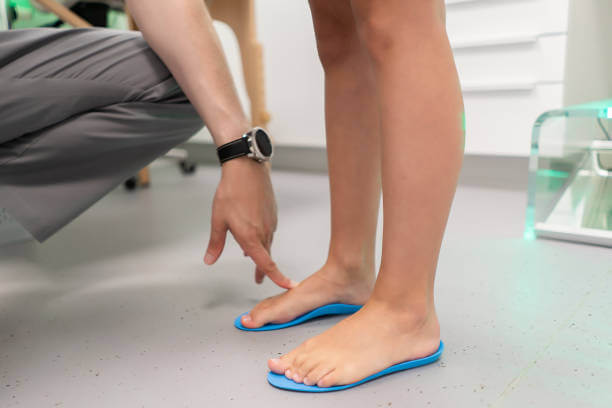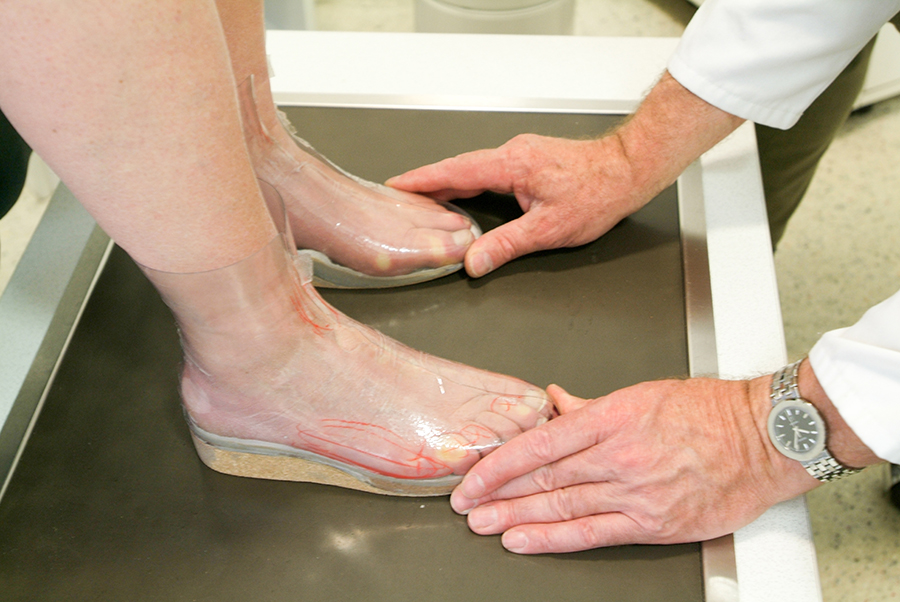Custom Boot Fittings Explained Thornton CO
Custom Boot Fittings Explained Thornton CO
Blog Article
Understanding Boot Layout and Fit Longmont CO
Choosing the right ski boot can considerably have an effect on your skiing experience, impacting both comfort and performance. Understanding the important parts concerned in making this alternative is significant for skiers of all ranges, from novices to seasoned specialists. The right ski boot enhances control over your skis, allowing for higher maneuverability on various terrains.
One of the primary considerations in deciding on a ski boot is the fit. Ski boots should fit snugly, however not uncomfortably tight. It’s necessary to strive on various fashions and types, as every has its own unique shape and sizing. A good fit will decrease movement inside the boot, lowering the prospect of blisters and ensuring that your energy is transmitted efficiently to your skis.
Preparing for Outdoor Boot Fitting Loveland CO
Keep in thoughts that the majority ski boots come in numerous widths. The size of the boot is only one element of fit; the width will create a extra customized experience. Boots are often categorized as narrow, medium, or wide, catering to totally different foot shapes. Your foot shape will largely dictate which width is finest fitted to you, impacting how snug you're feeling during your snowboarding classes.
Next, the flex index must be taken under consideration while selecting the best ski boot. Flex refers to how stiff or delicate a boot is, with stiffer boots offering more management and response. On the opposite hand, softer boots are more forgiving and simpler for novices to handle. Advanced skiers might prefer stiffer fashions for optimum performance, while these new to the game may find softer choices more affordable and comfy.
The supposed ski style also plays a crucial function in your choice - Is Bootfitting Really Necessary? Louisville CO. Are you planning on snowboarding mostly on groomed trails, or do you aspire to venture into backcountry skiing? Freestyle skiers often choose softer boots, permitting for flexibility during jumps and tricks. Alpine skiers may opt for stiffer fashions that promote stability and responsiveness on hard-packed snow or icy conditions
Men's and Women's Ski Boots Fit Brighton CO
Another necessary aspect is the boot's thermal insulation and how it keeps your toes heat throughout extended exposure to chilly. Insulation materials differ considerably, and some boots come with added know-how for warmth retention. If you’re snowboarding in frigid conditions, choosing a boot equipped for heat can drastically improve your enjoyment on the slopes.
When assessing the liners of the ski boot, it is clever to understand that this part can drastically change the fit and really feel of your boot. Many fashionable ski boots come with heat-moldable liners that conform to the shape of your foot over time. This customization can lead to enhanced comfort and improved performance, as the liner supplies better support in your foot and ankle.

Buckle systems are one other component to not overlook whereas choosing ski boots. The number of buckles impacts how securely the boot matches and the way simply you'll be able to take it on and off. Boots with more buckles present a extra adjustable fit and better security. However, these with less complicated techniques could additionally be simpler for novices to manage. Consider which aspects matter most to you primarily based on private preference and expertise degree.
First Time Getting Ski Boots Fitted Tips Northglenn CO
Selecting the right ski boot size can be sophisticated by variations in manufacturers. Sizes can vary, so it’s advisable to refer to dimension charts specific to each model you attempt on. Understanding your foot's measurements can guide you towards a more fitting alternative. This information may help you keep away from choosing a boot that is both too large or too small, both of which can detract out of your skiing experience.
It’s essential to examine for additional options that some boots provide, corresponding to stroll modes or interchangeable soles. Walk modes permit for easier motion when you’re not in your skis, a great boon for many who like to hike or transfer across the lodge. Interchangeable soles can make the boot extra versatile, permitting it to adapt to various varieties of skiing or even walking.
Try to hunt the steerage of skilled retail professionals when navigating the plethora of options obtainable. They can provide insights and recommendations primarily based in your snowboarding style, talent stage, and private preferences. Their expertise will help filter the appropriate boots that match your needs, guiding you thru the nuances of fit and performance.
Adjusting Ski Boots for Comfort Longmont CO
In conclusion, the quest for the right ski boot combines numerous important elements that require cautious consideration. Fit, flex, style, insulation, liners, buckles, measurement variations, and additional features all play a task in your choice. Spending time to research and check out completely different fashions could make a substantial difference in both performance and luxury, making certain a extra enjoyable day on the slopes. Prioritizing these elements and looking for skilled recommendation will equip you with the required tools to make an informed selection, resulting in improved snowboarding experiences for years to come.
- Assess your ability level; beginner skiers typically need softer flex boots, whereas advanced skiers benefit from stiffer options for better control.
- Prioritize fit over model; a well-fitting boot is essential for comfort and performance, whatever the producer.
- Consider the boot’s final width, because it influences the amount of your foot; a narrow last enhances precision for narrow ft, whereas a wide last offers comfort for broader ft.
- Pay consideration to flex index ratings; every boot has a unique flex rating that matches your snowboarding fashion and physical attributes, affecting responsiveness and luxury.
- Explore custom insoles; they will considerably improve comfort and forestall issues similar to blisters and cold ft by providing higher arch assist and weight distribution.
- Test boots in-store with appropriate ski socks; make sure the fit is cosy but not painfully tight, allowing for slight wiggle room and correct circulation.
- Look for heat-moldable liners; these can be customized to the shape of your foot for enhanced comfort, especially if you experience any pressure points.
- Consider the type of skiing you intend to do, whether it is alpine, backcountry, or freestyle, as every requires particular boot traits for optimal performance.
- Check for buckling methods and features like energy straps; a great closure can enhance fit, scale back motion, and improve total snowboarding effectivity.
- Don’t forget about liner materials; different supplies provide varying ranges of warmth, moisture-wicking, and cushioning, directly impacting your snowboarding expertise.undefinedWhat dimension ski boot should I choose?
Choosing the best measurement ski boot is crucial for comfort and performance. Measure your foot size in centimeters and consult a ski boot size chart, usually a half-size smaller than your regular shoe size. Always strive boots on with the right ski socks for an accurate fit.
How do I know if the ski boot is too tight or too loose?
Ski Boot Fit for Advanced Skiers Lafayette CO
A well-fitted ski boot ought to feel cosy but not painfully tight. Your toes should just touch the front of the boot when standing upright. When you bend your knees forward, your toes should pull barely away from the entrance. A loose boot can lead to poor control and blisters.
What is the difference between delicate and stiff ski boots?
How-To Guide for Ski Boot Fitting Niwot CO
Soft ski boots offer extra flexibility and comfort, making them appropriate for newbies or casual skiers - Tips for a Great Boot Fit Superior CO. Stiff boots present higher responsiveness and control for knowledgeable skiers on challenging terrain. It's important to decide on primarily based on your skill stage and snowboarding style
Should I consider boot width when choosing ski boots?
Yes, boot width, also known as "last," is important for comfort. Ski boots come in numerous widths—narrow, medium, and wide. Measure the width of your foot and consider every mannequin's fit to ensure comfort and reduce pressure points whereas snowboarding.
What kind of ski boot is best for my snowboarding style?
Importance of Boot Fitting Westminster CO
Consider your skiing fashion: if you plan to journey groomed trails, an all-mountain boot is ideal. Backcountry skiers should go for lighter, more versatile options. Freestyle skiers profit from soft boots for greater maneuverability. Match the boot type to your skiing choice for optimum performance.

How necessary is custom fitting for ski boots?
Professional Ski Boot Fitting Techniques Wheat Ridge CO
Custom fitting can significantly enhance comfort and performance. Professional boot fitters can adjust your boots to your foot shape, addressing particular pressure points and making certain a greater fit. While not essential, it’s beneficial, particularly for individuals who ski frequently or have foot issues.

Is it worth spending more on higher-end ski boots?
Higher-end ski boots usually feature superior materials and technology, providing higher comfort, performance, and sturdiness. If you ski regularly, investing in a high quality pair can enhance your experience and allow you to develop higher abilities. Consider your skiing frequency and elegance when deciding.
Adjusting Ski Boots for Comfort Arvada CO
What features should I look for in a ski boot?
Look for options similar to heat-moldable liners for personalized comfort, adjustable buckles for a greater fit, and waterproof materials to maintain your feet dry. Flex rating, insulation, and weight are also important elements that should align together with your skiing needs and conditions.
Balancing Comfort and Performance in Fit Wheat Ridge CO
How do I maintain and store my ski boots?
Always dry your ski boots after every use to stop moisture buildup, which might result in odors or deterioration. Store them in a cool, dry place away from direct sunlight. Regularly verify the liners, buckles, and soles for wear and tear to make sure they proceed to be in good situation.
see page The Art of Ski Boot Customization Report this page